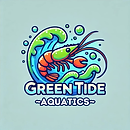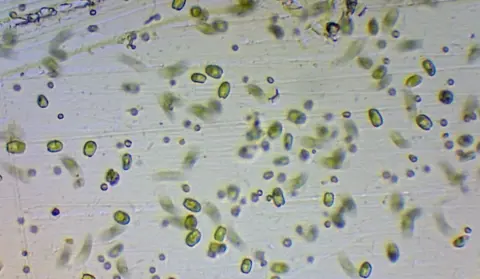🌿 Pavlova Lutheri
- Dion Tomaras
- May 10, 2025
- 2 min read

Pavlova lutheri, now taxonomically recognized as Diacronema lutheri, is a marine microalga of considerable importance in aquaculture and biotechnology. Renowned for its high nutritional value and lipid content, this species has been extensively studied and utilized in various applications.
🧬 Taxonomy and Classification
Current Name: Diacronema lutheri (formerly Pavlova lutheri)
Synonyms: Monochrysis lutheri, Pavlova lutheri
Family: Pavlovaceae
Class: Pavlovophyceae
Phylum: Haptophyta
The species was initially described as Monochrysis lutheri by Droop in 1953. Subsequent studies led to its reclassification as Pavlova lutheri, and more recently, based on integrative taxonomy approaches, it has been placed in the genus Diacronema .
🔬 Morphology and Physiology
Diacronema lutheri is a unicellular, flagellated microalga characterized by:
Size: Approximately 3–6 µm in diameter
Color: Golden-brown due to the presence of fucoxanthin
Flagella: Two unequal flagella and a unique organelle called a haptonema
Cell Structure: Contains chloroplasts with chlorophylls a and c, and accessory pigments like fucoxanthin, contributing to its photosynthetic efficiency
These features facilitate its mobility and adaptability in various marine environments.
🌱 Cultivation and Growth Conditions
D. lutheri thrives under specific culture conditions:
Temperature: Optimal growth between 11–26°C
Salinity: Tolerates a range of 8–32 ppt
Culture Media: Commonly cultivated in Guillard's f/2 medium
Photoperiod: Continuous illumination enhances growth and lipid accumulation
Studies have shown that manipulating environmental factors like light intensity, salinity, and pH can significantly impact its biomass and lipid productivity .
🧪 Biochemical Composition
D. lutheri is notable for its rich biochemical profile:
Proteins: Approximately 52% of dry weight
Carbohydrates: Around 24%
Lipids: Approximately 29%, with a high proportion of polyunsaturated fatty acids (PUFAs) SlideServeSpringerLink+1ResearchGate+1
It is particularly rich in essential fatty acids such as eicosapentaenoic acid (EPA) and docosahexaenoic acid (DHA), making it a valuable feed in aquaculture .
🧫 Applications in Aquaculture and Biotechnology
Aquaculture Feed
Due to its high nutritional content, D. lutheri is extensively used as a feed for:
Bivalve Larvae: Oysters, clams, and mussels
Crustaceans: Shrimp and other species
Fish Larvae: Providing essential nutrients during early developmental stages
Its digestibility and nutrient profile enhance the survival and growth rates of these organisms.
Biofuel Production
The high lipid content of D. lutheri makes it a promising candidate for biodiesel production. Research indicates that optimizing culture conditions can lead to increased lipid yields, making it a sustainable option for bioenergy .
Biotechnological Research
D. lutheri serves as a model organism in studies related to:
Lipid Biosynthesis: Understanding the pathways and regulation of lipid production
Genetic Engineering: Development of transformation protocols for enhanced metabolite production
Antioxidant Compounds: Exploration of its potential in producing bioactive compounds with health benefits

🧬 Genomic Insights
The genome of D. lutheri has been sequenced, providing valuable information on its metabolic pathways and potential for genetic manipulation. This genomic data facilitates advanced research in algal biology and biotechnology .
🌍 Conclusion
Diacronema lutheri stands out as a microalga of significant importance due to its versatile applications in aquaculture, biofuel production, and scientific research. Its rich nutritional profile and adaptability to various culture conditions make it a valuable resource in sustainable practices and biotechnological advancements.




